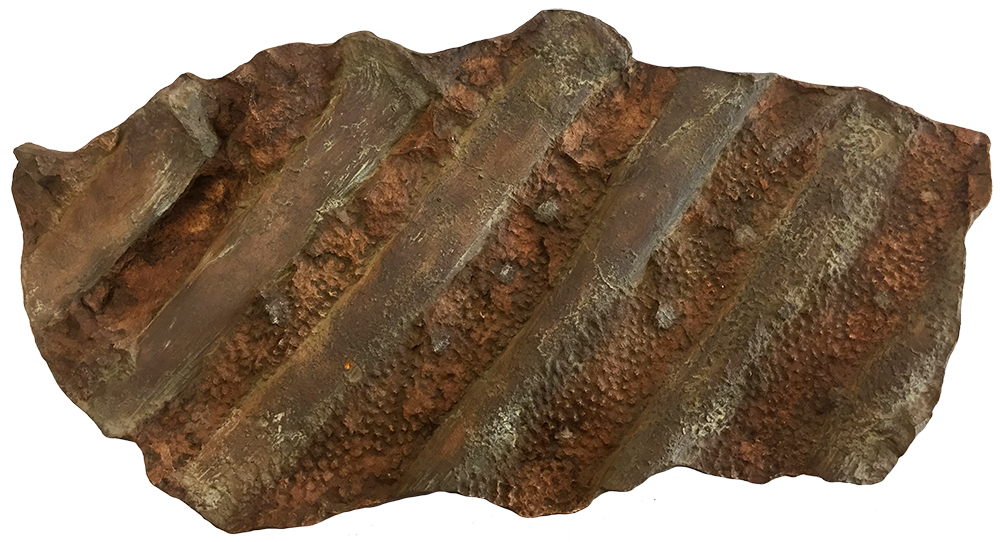
Lance Formation, Wyoming – Late Cretaceous, 66 MYA
This cast displays parts of several ribs from a hadrosaur that lived close to the end of the Cretaceous. More remarkably, in the depressions between the ribs, a knobby texture was preserved that is the impression of the hadrosaur’s scute covered skin.
While dinosaur skin impressions are far rarer than their bones, impressions are known from a variety of forms. Examples range from the exquisitely preserved feathers of small dinosaurs found in lake muds to ‘mummies’ of larger dinosaur lines found in sand deposits. One of the most famous examples of the latter was an Edmontosaurus specimen discovered in 1908 by the Sternberg family. The Sternberg’s skin clad Edmontosaurus came from Late Cretaceous strata in Wyoming, just as this cast’s original fossil did. In both cases, dehydration preserved the dinosaurs’ soft tissue long enough for it to make an impression in surrounding sediment. Although the skin itself was not preserved, the impressions it left allow us to interpret the animal’s original skin texture and, in some cases, even make estimates of its muscle mass.
While we now have skin impressions from nodosaurs, psittacosaurs, sauropods, and theropods, our greatest number of skin impressions happen to come from Cretaceous hadrosaurs. Although often referred to as dinosaur ‘mummies’, that name is technically incorrect, as mummies have preserved skin while these hadrosaur remains only have skin impressions. No original skin remains nor was the animal’s skin mineralized. Yet these impressions allow us to determine that the skins’ scute patterns differed between hadrosaur species, even those of the same genus. Their skin patterns were another form of ornamentation that served to distinguish hadrosaur species, much like the head crests many hadrosaurs bore.